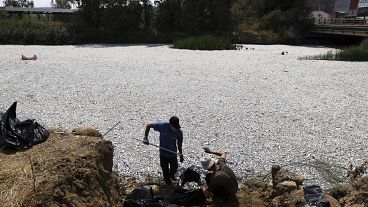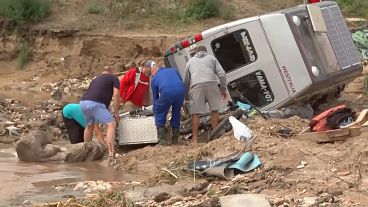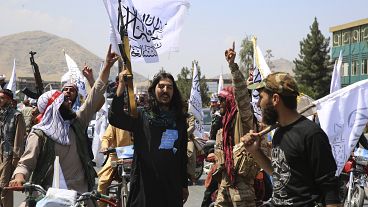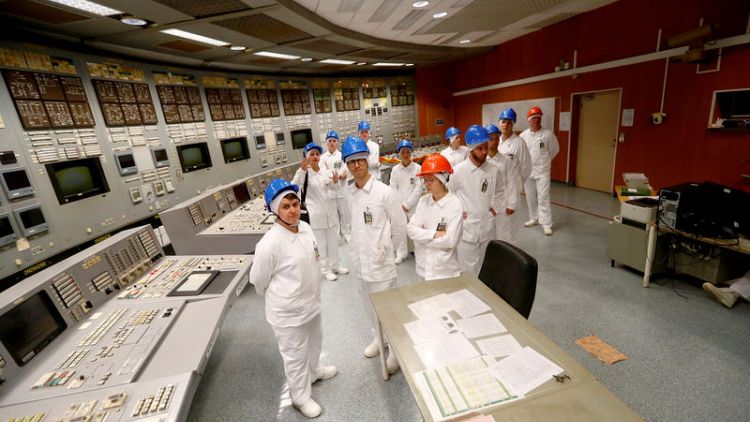By Andrius Sytas
IGNALINA NUCLEAR POWER PLANT, LITHUANIA (Reuters) - The success of a U.S. television series on the 1986 Chernobyl nuclear disaster has made its filming locations in Lithuania an off-beat tourist attraction, but has also renewed the anger and helplessness felt by many of the Lithuanians forced to clean up the contamination.
The Soviet leadership sent an estimated 7,000 Lithuanians, all but 100 of them male, to Chernobyl in the months and years after the disaster. Many were forced against their will.
There they joined others from across the Soviet Union to work on the clean-up without sufficient protection or medication for their exposure to the high levels of radiation. Many now suffer from illnesses and health problems as a result.
Lithuania, then part of the Soviet Union, was 450 kilometres from Chernobyl, in Ukraine, also then a Soviet republic.
Kestutis Kazlauskas, 61, was a 28-year-old conscript who spent 105 days in a camp 30 kilometres from Chernobyl, helping build a dam for filtering out radiation from a river.
"We felt as if we are going to war," he said. "We went to die there, and were almost surprised to come back alive."
The TV series and its critical acclaim are a painful reminder how the Soviet and later Lithuanian governments paid little attention to the workers, former rescuers say.
The workers were issued faulty radiation gauges to track exposure, Kazlauskas said. Many drank local moonshine to relieve stress, despite reports it was produced with radioactive water.
"My main health problems were, immediately, the thyroid gland, high blood pressure and teeth falling out," he said.
He has set up an organisation of former clean-up workers to lobby for more government support, such as early retirement.
While the state does provide some benefits if it can be proven that an illness stems from Chernobyl - the rescuers say it is almost impossible to prove.
Algiridas Simenas, 63, flew numerous times over the smouldering reactor in a helicopter to help douse the flames in the days immediately after the explosion.
"I am doing OK...but I don't think it's fair how the others are treated," he said.
He received a hand-written note from Soviet leader Mikhail Gorbachev but suffered radiation-related heart problems which barred him from ever flying an aircraft or helicopter again.
"The publicity after the HBO series will not change anything for us," said Pranas , 63, who worked on building a new town for former Chernobyl workers from 1987 to 1988.
"We don't really expect much anymore".
"UNCOMFORTABLE FEELING"
The mini-series, nominated for 19 Emmy awards on July 16, depicts the explosion's aftermath: the vast clean-up operation and the inquiry into the disaster, caused by a botched safety test in the Chernobyl atomic plant that sent clouds of nuclear material across much of Europe.
Groups of foreign visitors can now tour the filming locations such as the Ignalina Power Plant, decommissioned almost a decade ago, which has a Chernobyl-type reactor and control rooms.
Its core remains highly radioactive and stands 7 metres below tourists' feet, shielded by protective layers.
"When we walked on the nuclear reactor and she [the guide]explained what we were actually standing on, I got a little bit of an uncomfortable feeling," said 32-year-old British tourist Tom Slaytor, wearing a plant-issued white overall and boots and a blue safety helmet.
Everyone is checked for contamination on exit.
Since the series aired, tours have become fully booked until January 2020, and the plant is working to double visitor capacity to cope with the demand from Europe and beyond.
Tours also take place in Fabijoniskes, a district of Vilnius where scenes set in the town of Pripyat, which housed Chernobyl workers and later fell within the exclusion zone, were filmed.
(Reporting By Andrius Sytas, Editing by Michael Kahn and Alexandra Hudson)












